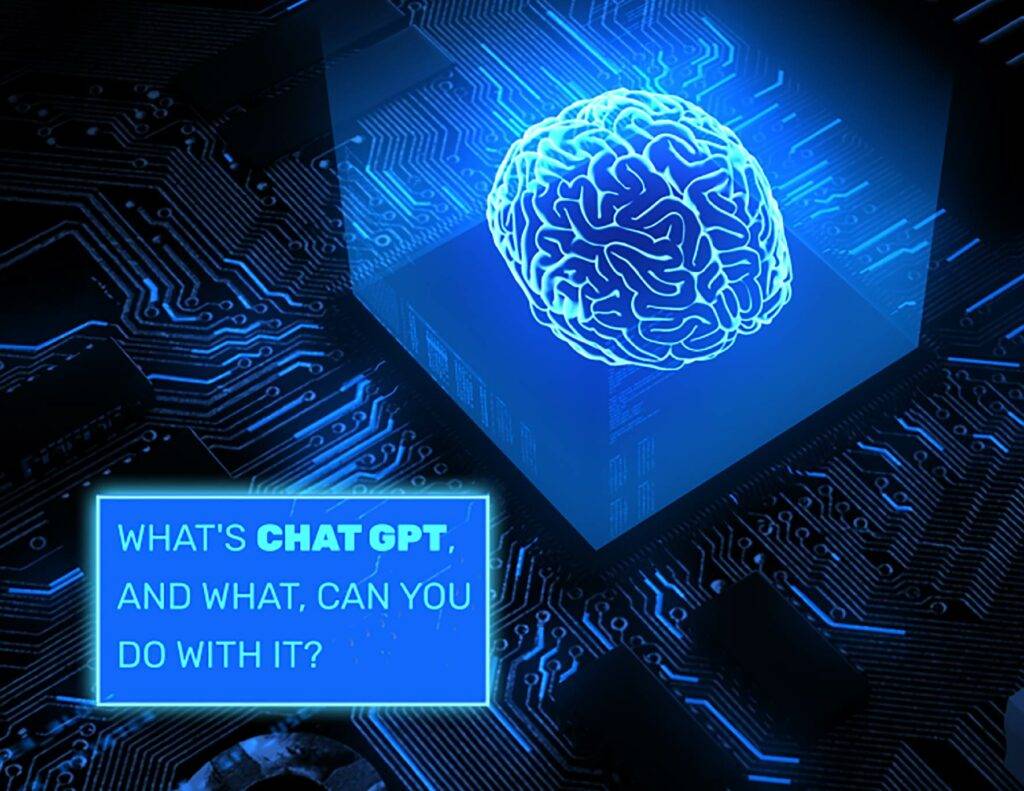ChatGPT is a chat system based on the language model by Artificial Intelligence GPT-3, developed by OpenAI, an artificial intelligence research organization based in San Francisco, California. It was founded in 2015 by a group of AI researchers and entrepreneurs, including Elon Musk, Sam Altman, and Greg Brockman.
OpenAI aims to develop high-quality, open-access AI technologies for society at large. To achieve this, the organization conducts research in various areas, including deep learning, natural language processing, and game autoplay.
Chat GPT is a model with more than 175 million parameters, trained with large amounts of text to perform language-related tasks, from translation to text generation. Its ability to understand the context and intent behind the questions or queries of users makes it a handy tool for developing chatbots and improving accuracy in information search systems.
Artificial intelligence is trained based on text, questions are asked, and information is added so that this system, based on corrections over time, is “training” to perform the task for which it has been designed automatically. This is the method to train all AI. In the case of ChatGPT, this AI has been trained to hold conversations with anyone.
The most amazing thing about this AI chat is that it can give accurate and complete answers, even from several paragraphs. In addition, these answers can express you naturally and with precise information, which makes it very difficult to distinguish that AI has generated the text.

(Chat GPT’s home screen)
Here are four key points where the GPT Chat language model can be used:
- Text generation: the model can be used to generate coherent and natural text, either in the form of stories, articles, or answers to questions.
- Improved accuracy in search systems: The model can help improve accuracy in search information systems by understanding the context and intent behind user queries.
- Development of chatbots: the model can be used to develop chatbots that can have natural conversations with users, responding consistently and accurately to their questions.
- Improved natural language processing: The model can be used to improve natural language processing in various applications, such as machine translation or detecting feelings in text.
Chat GPT has been trained with a wealth of text data to perform various tasks related to natural language. These text data include books, articles, news, and conversations, which teach the model how to understand and generate text coherently and naturally.
Therefore, Chat GPT obtains the necessary information to generate complex answers from this text data, which allows you to understand the context and intention behind the questions or queries of users.
In addition, the model can also use other types of information, such as images or videos, to improve its ability to understand the world around it and generate more accurate and consistent responses.
How to use ChatGPT?
Starting to have your conversations with artificial intelligence is very simple. All you have to do is enter their official website. Once you log in, you’ll be in the chat. At the bottom, you’ll have a bar where you type whatever you want. Before you start, you will see examples of things you can ask in English, but you can choose a different language.
When it comes to using it, we recommend experimenting with different types of requests to explore all the functions of AI. Resourcefulness when asking questions or requests can be key to getting better results in cases like this. Everything you write will be recorded and reviewed by OpenAI developers to continue training ChatGPT.
Furthermore, these are some examples of how ChatGPT can be used in many economic and business fields:
- Financial services: The GPT language model can be used to improve online customer support through chatbots that can answer questions and solve problems quickly and efficiently.
- E-Commerce: Chat GPT can be used to generate product descriptions and personalized recommendations for customers in an online store.
- Health care services: It can also be used to generate medical reports and summaries of medical records more quickly and accurately.
- Education: To create personalized educational content for students based on their needs and level of knowledge.
- Technology services: To improve online customer support through chatbots that can answer technical questions and solve problems related to the products or services of the company.
- Transport services: The GPT language model can be used to generate real-time information about train and bus schedules and provide route recommendations and travel tips to customers.
- Entertainment services: Chat GPT can write synopsis and reviews of movies and TV shows and provide personalized content recommendations to users.
This AI is so powerful and capable of generating complete and informed responses that it even reportedly scared Google to generate a Code Red. Some say it could kill this and other similar search engines. For the time being, it seems that Google, Bing and DDG are already demoting content generated by ChatGPT, as shown by an experiment performed by Lucas Lopatin and shown in the article Will AI put a stop to ChatGPT success?
ChatGPT is, in many subjects, still inaccurate, especially in names and some concepts, so it indiscriminate use could lead to spreading misinformation. There ought to be a right balance between the human expertise and a technology tool like ChatGPT (https://www.businessinsider.com/i-asked-chatgpt-to-write-insider-story-it-was-convincing-2022-12).



